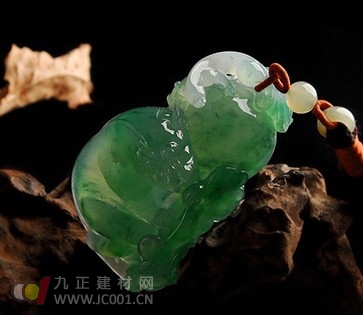Jade has long been a symbol of beauty and cultural significance, especially in Chinese traditions. Aiyu and Tibetan jade represent centuries of craftsmanship and heritage. Within the rich history of jade culture, every piece carries meaning and symbolism. As a collector, it's essential to appreciate jade with an artistic eye. But how can one assess the color and value of jade?
Just as a fine horse needs a quality saddle, or a master painter chooses high-quality paper, the same applies to jade carving. Carvers carefully select materials, avoiding waste on subpar stones. A skilled artisan will only use the best jade for their work, ensuring that the final product is both beautiful and meaningful.

**Examining the Craft to Identify Quality Jade**
Finding high-quality jade is rare. Usually, only small portions of a large stone are suitable for carving. Newcomers to jade often avoid using premium pieces for practice. For those new to collecting, the easiest way to judge jade quality is by examining its craftsmanship. Learning to identify jade material takes time and experience. Beginners may not yet be able to distinguish real from fake, and they might easily mistake poor-quality jade for something valuable. Additionally, the value of a jade piece depends not only on the material but also on the skill of the carver.
**The Value of Jade Lies in Its Origin and Color**
High-quality jade mainly comes from two regions: Hetian jade from Xinjiang, China, and Myanmar jade. Hetian jade is typically white and highly sought after for collection. Due to its rarity, it has become increasingly expensive. Good jade often has a glassy or icy appearance, appearing more transparent. Among various colors, green jade is considered the most valuable.
It is said that good jade feels smooth and cool when held close, while lower-quality jade may appear dull and lackluster. White jade, also known as nephrite, gets its name from the fibrous structure of its internal particles. Understanding these characteristics helps in identifying genuine, high-quality jade. Whether you're a seasoned collector or just starting out, developing an eye for jade requires patience, knowledge, and a deep appreciation for this timeless art form.
An electric Butterfly Valve is a type of valve that uses an electric motor to control the opening and closing of the valve. The valve consists of a disc that rotates around a central axis to control the flow of fluid or gas. When the electric motor is activated, it rotates the disc to open or close the valve. Electric butterfly valves are commonly used in industrial applications such as water treatment, chemical processing, and HVAC systems. They are preferred over manual valves because they offer precise control and can be operated remotely.
Electric Butterfly Valve,Electric Actuated Butterfly Valve,Electric Butterfly Valve Price,Electric Butterfly Valve
WUXI KVC-VALVE , https://www.wxkaiweixi.com